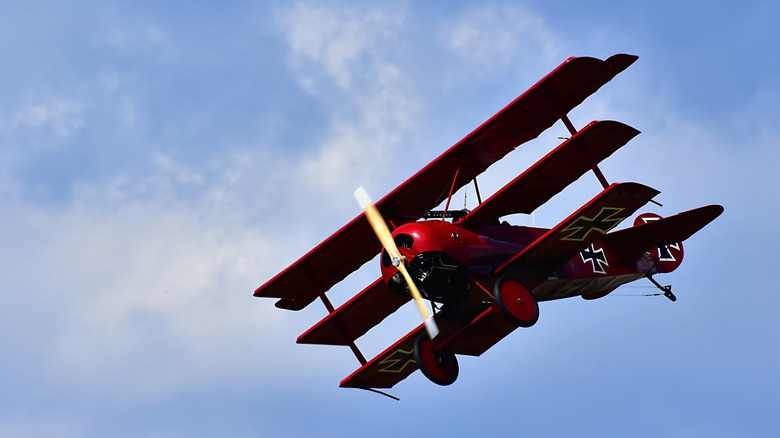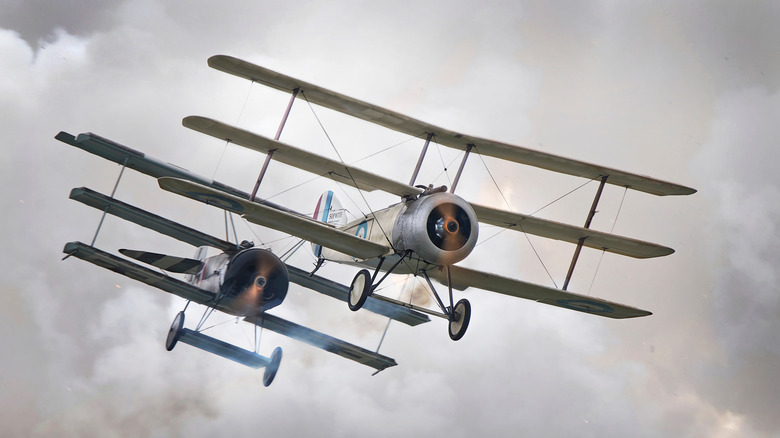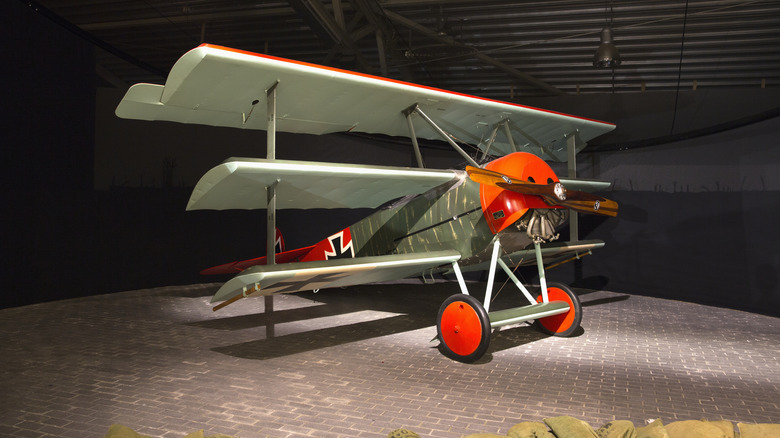Why Did Some WW1 Planes Have Three Wings?
The Great War was a fascinating time for airplanes – the Wright brothers had just recently invented the airplane in 1903, and militaries found out mounting machine guns (only after figuring out how not to shoot their own propellors) on this newly unveiled technology could yield them quite an edge over the enemy. The idea gave rise to immense dogfights between fighter planes of the time, and militaries experimented with ideas to garner an edge with their aircraft.
Naturally, many of these ideas didn't stick. One such idea was adding another set of wings over the more common biplanes (two-winged planes) of the time. The first major triplane was built to provide the pilot with a better field of view without compromising on the lift. However, it was quickly evident that triplanes offered some additional perks than just a better view. In fact, these planes had their brief moment in the spotlight, primarily during 1917 and 1918. One of the most famous fighter pilots of World War I, Manfred von Richthofen aka the Red Baron, who won a whopping 80 dogfights in his career, loved flying one. The planes were also extremely deadly when they first emerged, so why did the world move away from three wings?
The rise of the triplanes
The idea of using three wings dates long before the beginning of the war. In 1909, Alliot Verdon Roe became the first British pilot to fly an entirely British aircraft, which was a triplane. However, triplanes started getting noticed after the Sopwith Triplane emerged onto the scene. Back in the day, massive wings on biplanes obstructed the pilot's field of view. Manufacturers couldn't simply reduce the wing size without losing significant lift due to the weak engines of the time. The Sopwith Aviation Company came up with the ingenious idea of stacking an additional wing to solve this problem. The third wing compensated for the diminished lift caused by smaller wings while providing some additional benefits. Triplanes could climb up to greater heights and were much easier to maneuver. As a result, they became an instant hit for the Royal Naval Air Service after first flying in 1916. Flown famously by the No.10 Naval Squadron under the name "Black Flight", these planes wreaked havoc on the Germans, taking down 87 of their fighters.
The German response was the Fokker Dr.I –- another more famous triplane for its association with the Ace of Aces, Manfred von Richthofen. The Flying Circus Squadron led by Richthofen painted these triplanes in bright colors of red and yellow, making the planes stand out. Similar to the Sopwith, the Fokker tasted immediate success after its debut in 1917. The Germans built a total of 320 Dr.Is and the airplane won over 600 dogfight (here's why dogfights don't really happen anymore) during its service.
Triplanes had some major disadvantages
The additional lift from the third wing made triplanes easier to maneuver and climb, while offering a better field of view on the Sopwith (the Fokker Dr.I was in fact notorious for bad visibility). However, that's where the advantages end and a long list of downsides take center stage. The extra lift on the triplanes came at the cost of additional drag. To better understand it, imagine holding an open umbrella and running against the wind. You would notice the umbrella causes you to significantly slow down as it increases the air drag. As a general rule of thumb, airplanes try minimizing this drag to achieve greater airspeeds. The extra wing on the triplanes increased the drag and made them slower than their two-winged counterparts.
The cracks in the triplane's limitations started to widen after better biplanes like the Sopwith Camel (one of the top WW1 fighter aircraft) came into existence. These planes could outrun triplanes in terms of speed while offering good maneuverability, turning triplanes obsolete by late 1918. Additionally, both the Sopwith Triplane and the Fokker Dr.I were plagued with structural weaknesses despite their brief tenures. The wings on the Sopwith would sometimes collapse under high pressures, such as during steep dives, due to weaker wire gauging. Similarly, there were at least two reported cases of the wings coming off on the Dr.I, which even led to the airplane's temporary grounding. Apart from this, the challenges in maintaining and repairing these complex planes also played a part in turning triplanes into history after their short stint.


